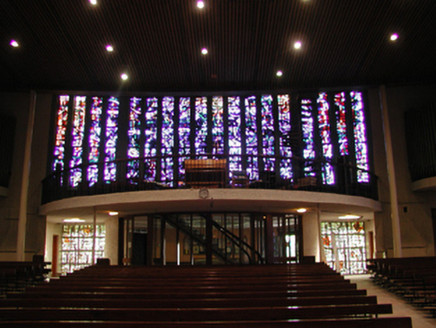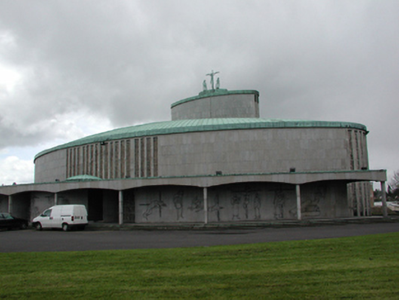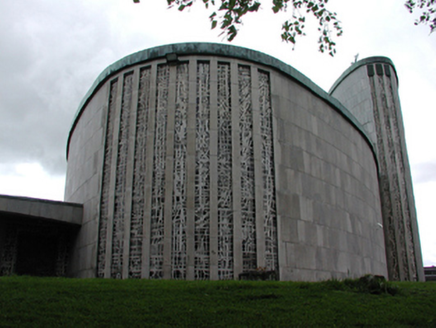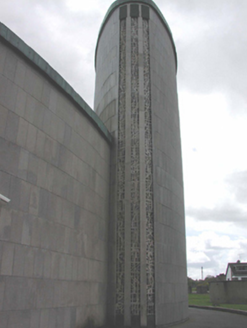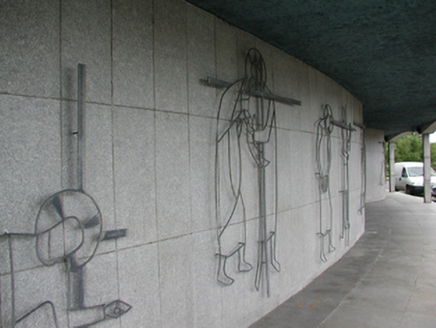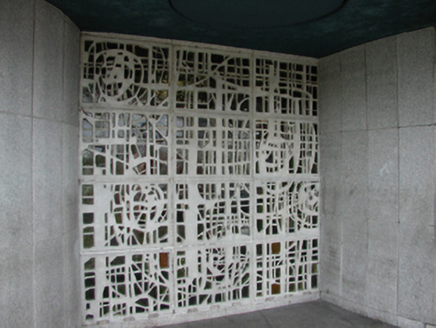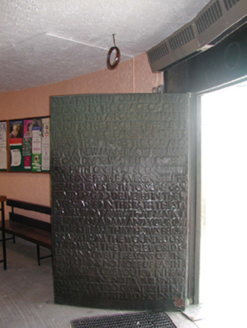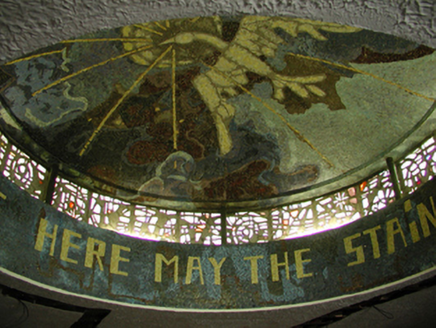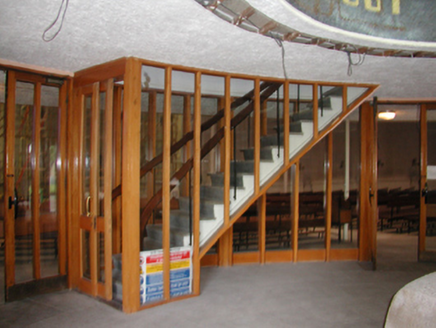Survey Data
Reg No
13900761
Rating
Regional
Categories of Special Interest
Architectural, Artistic, Historical, Social, Technical
Original Use
Church/chapel
In Use As
Church/chapel
Date
1965 - 1970
Coordinates
303997, 307449
Date Recorded
24/05/2007
Date Updated
--/--/--
Description
Freestanding multiple-bay double-height International Modern-style church, built 1966-67. Oval-plan with a series of interlocking oval forms, one which forms the low flat-roofed projecting open entrance porch and baptistery to the south, another forming the sanctuary to the north which rises like a tower above the main body of the church. Church is built of granite slabs, broken at the east and west ends of both the main body of the church and the sanctuary by floor to ceiling centred narrow windows by Gabriel Loire, and the whole is covered by a curved copper roof. Roof of sanctuary is topped by a metal sculpture of Calvary by Oisin Kelly. Entrance porch is made up of a series of segmental-headed arches carried on granite piloti, running across the entire south façade. Baptistry within lit by a shallow dome and flanked by the two main entrances which have copper doors, inscribed with letters by Frank Morris of early Christian prayers. Above the entrance front, and lighting the nave, is a series of tall Dalles-de-Verre glass, again by Gabriel Loire. Double-height interior opens into roof. Slatted pine ceiling supported on tall white shafts. Floor slopes towards sanctuary, a design by Ray Carroll. Its precipitous granite wall has low-relief carving of the Last Supper at its base. Church is set back from the line of the road, in its own grounds on a stepped base.
Appraisal
A striking composition built to designs by Frank Corr and Oonagh Madden, this profoundly inventive scheme testifies to the official approval for the use of modern styles in the building of Roman Catholic churches following the Second Vatican Council (1963-1965). The church is distinguished by its bold use of sheer granite walling, its narrow floor to ceiling stained glass windows by Gabriel Loire and copper clad roofs. Its daring design extends the boundaries of traditional church architecture in a way that adds interest and diversity to the streetscape.
